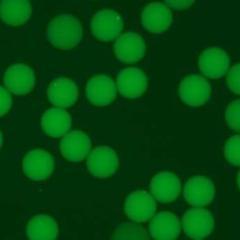VIB Tech Watch

We're here to impact your research and boost technology within VIB.
Our unique technology screening allows the discovery of new technologies and start-ups in early development. Tech Watch mediates early access to the technologies and creates valuable partnerships. We de-risk, evaluate, develop and disseminate novel technologies. These novel technologies are implemented within the VIB Core Facilities to facilitate access, services and training. We are always looking to collaborate with new technology providers or to engage in industrial technology co-evaluation partnerships.
Take a Look
Curious to know more? Check out the VIB Tech Watch people and facilities.

VIB Tech Watch: Laying the Technological Groundwork for Excellent Science
For the last 15 years, the technology experts at VIB Tech Watch have relentlessly scoured conferences, publications, patents, and every corner of the complex life sciences grapevine to identify new devices, modalities, approaches, and tools with the potential to revolutionize science.
In the Spotlight
A selection of research papers from the VIB-KU Leuven Center for Brain & Disease Research labs which utilised VIB Tech Watch.

Hydrop enables droplet-based single-cell ATAC-seq and single-cell RNA-seq using dissolvable hydrogel beads
Published in eLife
From the Stein Aerts Lab
VIB Tech Watch developed HyDrop, a flexible and open-source droplet microfluidic platform encompassing three protocols. HyDrop is currently capable of generating single-cell data in high throughput and at a reduced cost compared to commercial methods, and we envision that HyDrop can be further developed to be compatible with novel (multi) omics protocols.

Comparative analysis of antibody- and lipid-based multiplexing methods for single-cell RNA-seq
Published in Genome Biology
From the Stein Aerts Lab
Multiplexing of samples in single-cell RNA-seq studies allows a significant reduction of the experimental costs, straightforward identification of doublets, increased cell throughput, and reduction of sample-specific batch effects. Recently published multiplexing techniques using oligo-conjugated antibodies or -lipids allow barcoding sample-specific cells, a process called "hashing."
